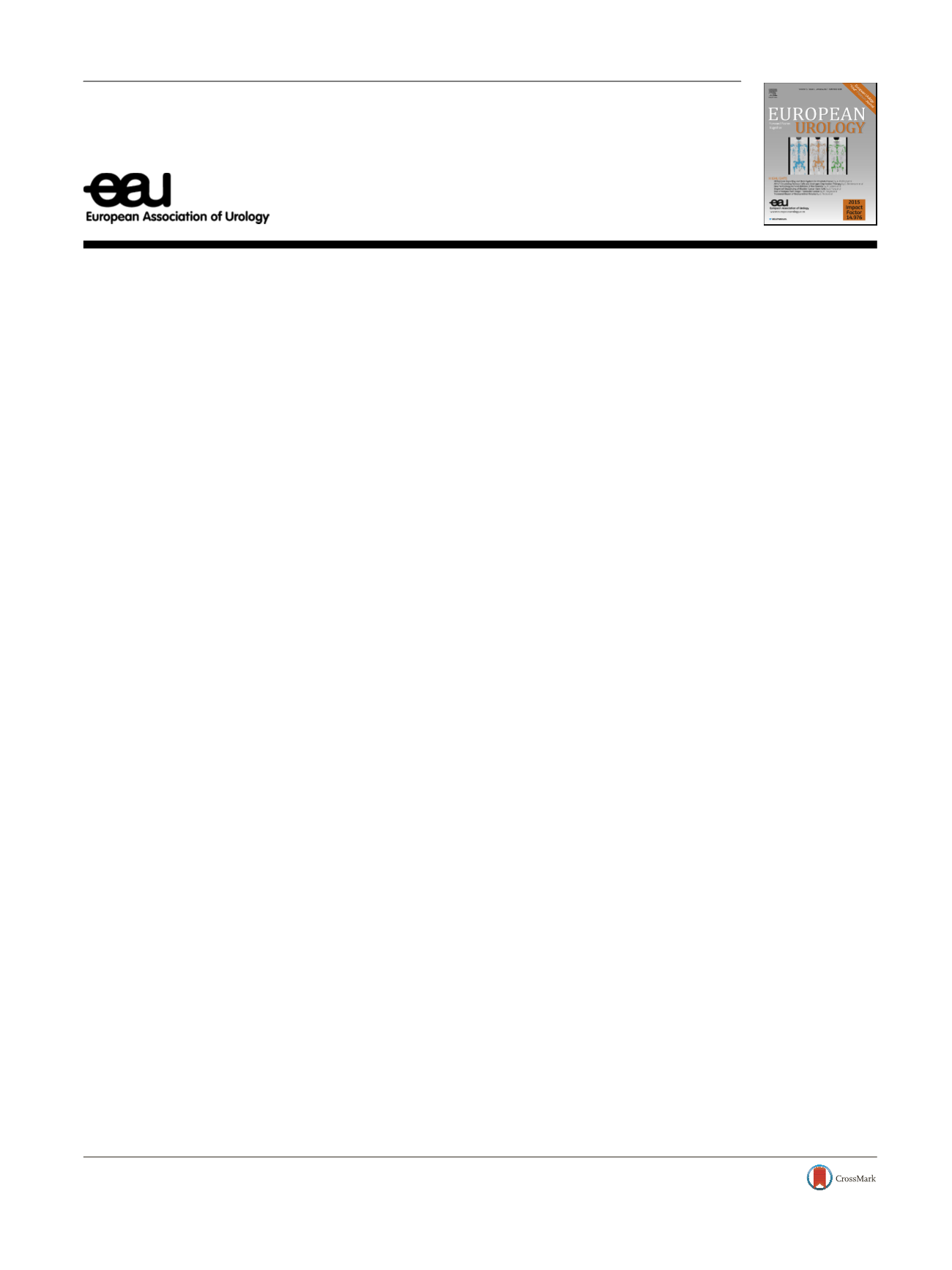

Letter to the Editor
Reply to Paolo Capogrosso, Francesco Montorsi, and
Andrea Salonia’s Letter to the Editor re: Philipp Mandel,
Felix Preisser, Markus Graefen, et al.
[1_TD$DIFF]
High Chance of Late
Recovery of Urinary and Erectile Function Beyond
12 Months After Radical Prostatectomy. Eur Urol
2017;71:848–50. Late Recovery of Erectile Function After
Radical Prostatectomy: Should We Modify the Way of
Assessment?
We thank Capogrosso and colleagues for their interest in
our article
[1]. For analyses of erectile dysfunction (ED)
recovery, we (and others
[2]) relied on the short version of
the International Index of Erectile Function (IIEF-5) score. As
correctly pointed out by Capogrosso et al, we defined
<
18 as
the cutoff for definition of ED. Using this cutoff, we could
show rates of late recovery of 30.8% at 24 mo and 36.5% at
36 mo for patients who suffered from ED at 12 mo after
radical prostatectomy (RP). The authors of the letter
legitimately raised the point that an increase of only 1 or
2 points in IIEF-5 score could lead to achieving the 18-point
threshold defining erectile function (EF) recovery, and thus
does not necessarily translate into a ‘‘real clinical benefit
behind the reported EF improvement’’. In this context, the
authors cited Rosen et al
[3], who introduced the very
interesting approach of the ‘‘minimal clinically important
difference’’ (MCID), which defines the smallest amount of
change in the IIEF-EF domain score (range 0–30 points) that
patients may consider beneficial. According to Rosen and
colleagues, the MCID is 2, 5, or 7 points (average 4 points),
depending on the ED level of severity (mild, moderate, or
severe)
[3] .When defining the MCID for our data, one also has to
keep in mind that we used the short version of the IIEF (IIEF-
5, range 0–25 points), which might lower the change in IIEF
score needed to fulfill the MCID. Taking ED severity into
account, MCID for the vast majority of our patients is most
likely to be ensured by a change of 4 or 5 points. Looking at
the increase in IIEF-5 score in our data for patients who
recovered from ED between 12 and 24 mo, 19.6% had an
increase of
<
4 and 29.8% an increase of
<
5 points (median
increase 7 points). For patients who recovered from ED at
36 mo, the respective rates were 15.5% and 24.4% (median
increase 7 points). Indeed, this calculation would lower the
reported rates of late EF recovery by up to 29.8% in patients
with an IIEF-5 score of 18. However, when using the
change in IIEF-5 score instead of a strict cutoff value, we
would also have to consider additional patients for the EF
recovery group who did not reach the cutoff over time, but
who did show a significant change in IIEF-5. For both time
points (24 and 36 mo) and different changes in IIEF score
(4 or 5 points) to ensure MCID, the number of these patients
exceeds the number lost from our analysis if using
MCID instead of a cutoff for patients who reached an IIEF
of at least 18.
Use of a measure to define the actual perceptible benefit
behind the reported EF recovery in addition to a cutoff value
represents a valuable and accurate approach, and both
confirms and strengthens our recently reported results
[1] .Conflicts of interest:
The authors have nothing to disclose.
References
[1]
Mandel P, Preisser F, Graefen M, et al. High chance of late recovery of urinary and erectile function beyond 12 months after radical prostatectomy. Eur Urol 2017;71:848–50.
[2]
Lee JK, Assel M, Thong AE, et al. Unexpected long-term improve- ments in urinary and erectile function in a large cohort of men with self-reported outcomes following radical prostatectomy. Eur Urol 2015;68:899–905.[3]
Rosen RC, Allen KR, Ni X, Araujo AB. Minimal clinically important differences in the erectile function domain of the International Index of Erectile Function scale. Eur Urol 2011;60:1010–6.
Philipp Mandel
a
Markus Graefen
a
Hartwig Huland
a
Derya Tilki
a,b,
*
a
Martini-Klinik Prostate Cancer Center, University Hospital Hamburg-
Eppendorf, Hamburg, Germany
b
Department of Urology, University Hospital Hamburg-Eppendorf,
Hamburg, Germany
*Corresponding author. Martini-Klinik Prostate Cancer Center,
University Hospital Hamburg-Eppendorf, Martinistrasse 52,
20246 Hamburg, Germany. Tel. +49 40 74100; Fax: +49 40 7410.
E-mail address:
d.tilki@uke.de(D. Tilki).
July 1, 2017
E U R O P E A N U R O L O G Y 7 2 ( 2 0 1 7 ) e 1 7 9ava ilable at
www.sciencedirect.comjournal homepage:
www.eu ropeanurology.comDOIs of original articles:
http://dx.doi.org/10.1016/j.eururo.2016.09.030,
http://dx.doi.org/10.1016/j.eururo.2017.07.001.
http://dx.doi.org/10.1016/j.eururo.2017.07.0020302-2838/
#
2017 European Association of Urology. Published by Elsevier B.V. All rights reserved.
















